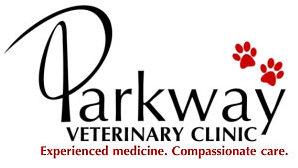Library
-
Melioidosis is a bacterial infection that is typically associated with tropical regions. The bacteria that causes melioidosis, Burkholderia pseudomallei, is usually found in soil and water. The clinical signs of this condition, along with transmission, diagnosis, treatment, and prognosis, are outlined in this handout.
-
Distemper in Dogs
El moquillo es una enfermedad vírica altamente contagiosa que afecta a los perros domésticos. Otras especies como hurones, mapaches y mofetas también se ven afectadas por esta enfermedad.
-
Pacheco's disease is caused by an avian herpesvirus. It is often a fatal disease, but treatment with an anti-herpes medication may be life-saving if used at first presentation. This disease is seen less often in today's pet bird population since most parrots are domestically raised and not imported.
-
Parvovirus may affect dogs of all ages but is most common in unvaccinated dogs less than one year of age. Young puppies under five months of age are usually the most severely affected and difficult to treat. Clinical signs can vary but generally include severe vomiting and diarrhea; the diarrhea often has a powerful smell, may contain lots of mucus, and may or may not contain blood. Most dogs with CPV infection recover if aggressive treatment is used and if therapy is started before severe septicemia and dehydration occur.
-
The Ebola virus is very contagious and is transmitted through blood, body fluids, and tissues, but not through air, water, or food. Ebola affects humans, non-human primates, and is carried by fruit bats. Other species do not appear to be affected, although there has been evidence of exposure to the disease in dogs, cats, and other domestic animals. Domestic animals are not believed to transmit the virus; however, there is a risk that they could transmit body fluids such as saliva on their fur to other humans. Any potential exposure to Ebola should be reported to your veterinarian who will contact the Center for Disease Control (CDC).
-
Avian polyomavirus infection (APV) of pet birds belongs to the family Polyomaviridae. APV can cause benign feather lesions in budgies, slow crop emptying in weanling parrots, hemorrhages on the skin, or acute death. Species particularly susceptible to APV infection include budgies, Eclectus parrots, Caiques, and hawk-head parrots. Clinical signs, diagnostic testing, and preventive measures are explained in this handout.
-
Feline poxvirus is a relative of the human smallpox virus seen mainly in Asia, Europe, and England. It causes skin lesions around the head, neck, and forelimbs, such as ulcerations, scabs, or abscesses. Cats often recover on their own with no further symptoms unless they are immunocompromised. There is no specific treatment or vaccine. Antibiotics may be used to control secondary infections. The virus can be transmitted to humans but can be significantly reduced by basic hygiene precautions.
-
Poxviruses can infect many species of birds, and each species of bird may have its own unique species of poxvirus. This handout explains three forms of the virus: cutaneous, diphtheroid, and septicaemic. Each of these forms has distinct clinical signs. Diagnosis, treatment, and ways to minimize the risk of infection in your bird are explained.
-
The American Animal Hospital Association and American Veterinary Medical Association have established guidelines to standardize preventive health care for cats, helping them to live longer, healthier lives. This handout provides an overview of the recommendations within these guidelines and why they are so important.
-
The American Animal Hospital Association and American Veterinary Medical Association have established guidelines to standardize preventive health care for dogs, helping them to live longer, healthier lives. This handout provides an overview of the recommendations within these guidelines and why they are so important.


